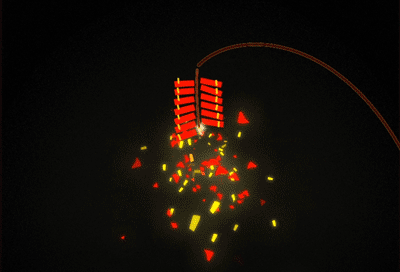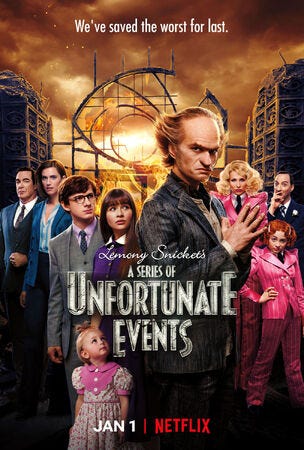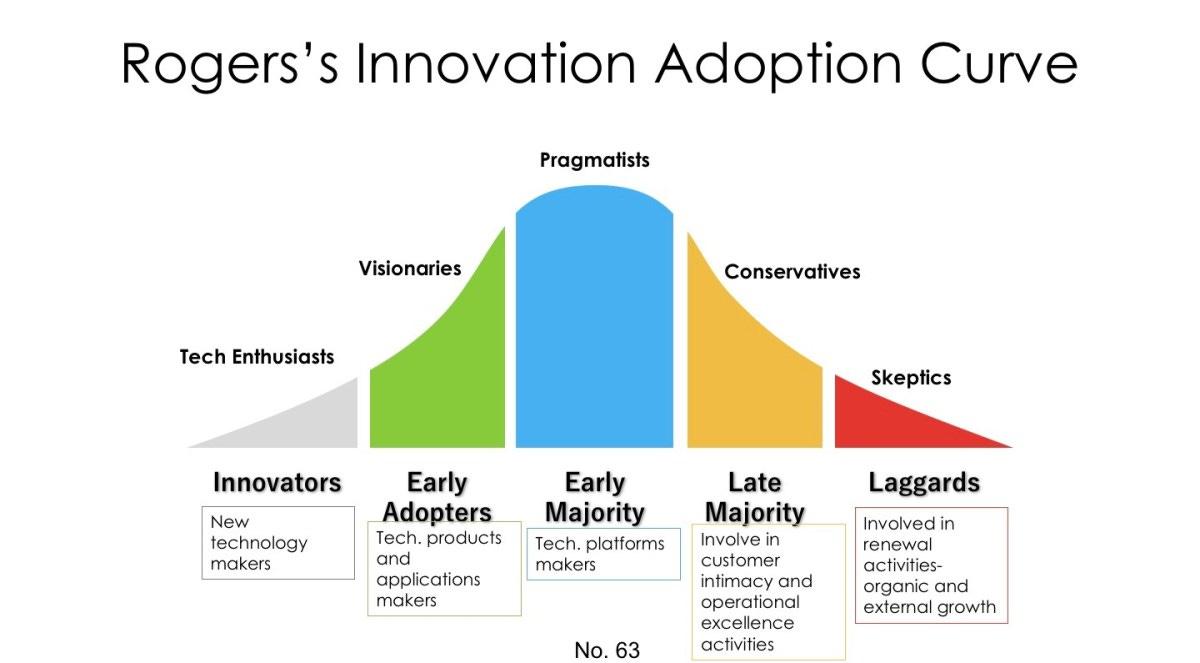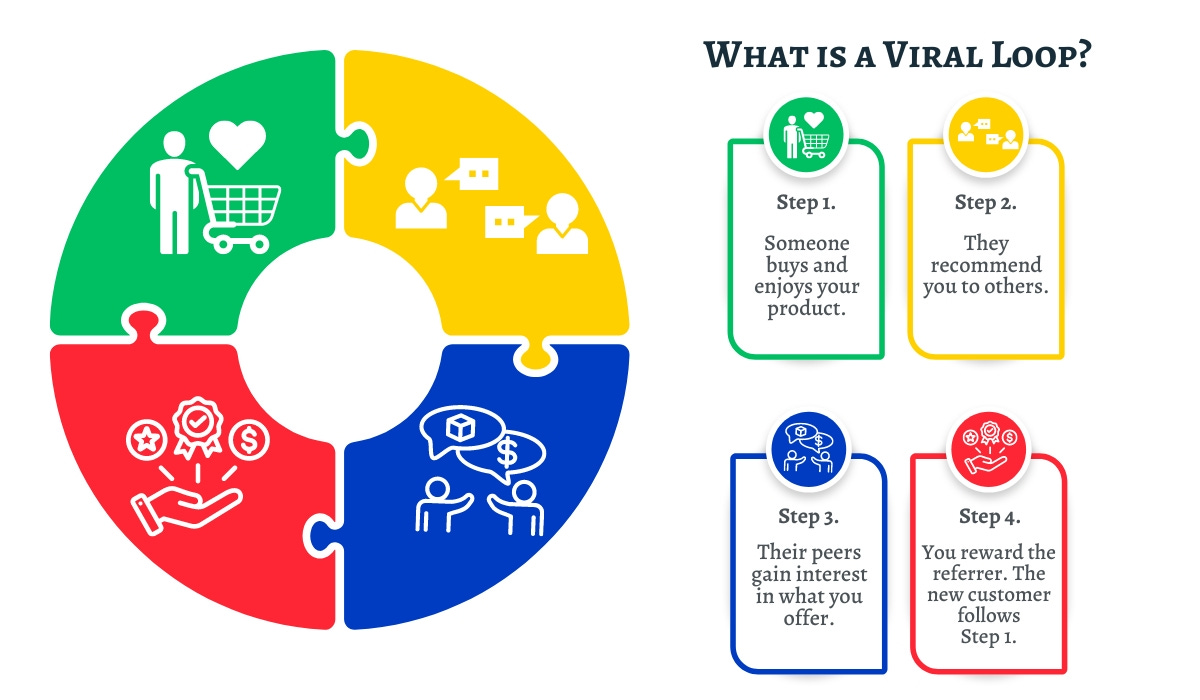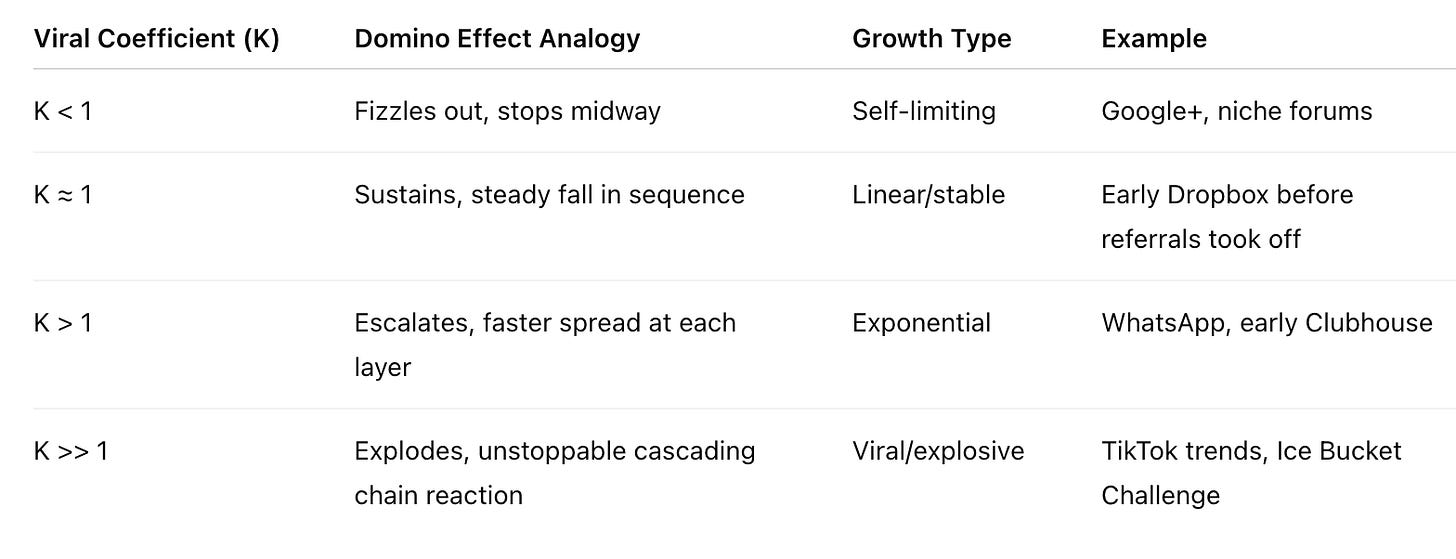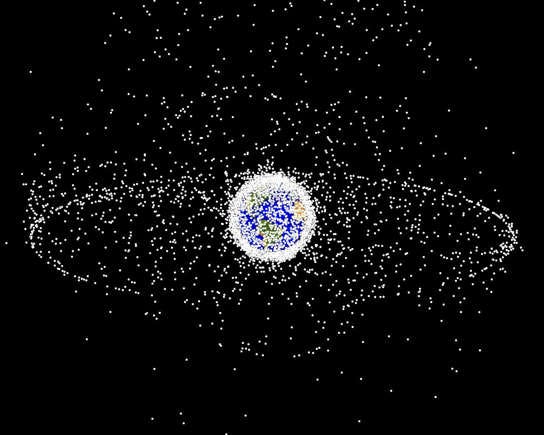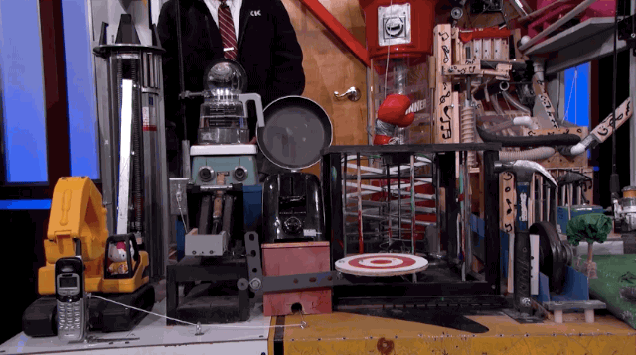#Business Analogy 031 - Domino Effect - Drop of Honey - Chain Reaction - Final Destination - Mimetic Contagion - The First Penguin - Cast the First Stone - Viral Growth
Moving the first step is always the most difficult, if you can make the first move the rest will follow, in many situations in life and business one small action can trigger a chain reaction
INTRODUCTION
MY ENCOUNTERS WITH THE DOMINO EFFECT
My earliest interaction with the chain reaction was in my childhood when we started Lighting Crackers during DIWALI.
Among the various crackers that we lit, one was particularly interesting, the 10,000 Wala, as it was known.
What is special about 10,000 wala? It has 10,000 crackers arranged in a sequence.
You just need to light up the edge, and then all the 10,000 crackers would light up one after the other in a sequence.
But lighting up the first one in the series is dangerous; if you don’t run away from there, it will blow up on your face.
The 10,000 wallas had other various, the 5,000 walla and the 1,000 wala, depending on the number of crackers arranged in a sequence, and it was the topic of discussion the next day in school.
I saw the domino effect in a funny movie - Robinhood Men in Tights during my childhood, a few years later. The invincible soldiers in armor are taken down by Robinhood by kicking the first soldier, and the rest fall like a pack of cards or dominoes.
This domino effect is a chain reaction, and I would encounter it a dozen more times as my life progressed in chemistry, nuclear physics, movies, YouTube videos, and others…
Surprisingly, the last time the Domino Effect entered my life was during a boring lecture in MBA, when my friend asked me to install this new trending app, called CHAIN REACTION, on my tablet.
The game was really interesting
The Domino Effect, as it is called, has very serious implications because the consequences in the real world for such a process are extremely dangerous, as we will see in this article. The Domino Effect could lead to Dams collapsing in quick succession. These Domino Effects under exponential conditions could also lead to the Butterfly Effect.
Let’s check the Domino Effect with a few real-life stories, folktales, short stories, and thought experiments.
A Farsi Folktale can illustrate the Domino Effect better and can serve as a great analogy for Chain Reactions.
FOLKTALE
DROP OF HONEY
A hunter 🏹 and his hound 🐕, high in the desert mountains 🏔️, found a cave 🕳️. The hunter in the cave found a hollow, and the hollow was filled with the most beautiful, clear honey 🍯.
He took his waterskin 🫗 and filled it with honey, left the cave, and came down the mountains ⛰️.
He was not in his own land 🌍.
And there in the town 🏘️ that he entered, he saw an oil seller 🫒. And he went into that stall and offered his honey for sale – perhaps an exchange for some oil? 🛢️ And the oil seller was intrigued 🤔.
As he was tasting the honey 😋, one drop of honey 🍯 fell upon the ground.
Some flies 🪰 buzzed, swarming around the honey. And as they swarmed there, some birds 🐦 flew down to peck and eat the insects. But as the birds flew, darting among those insects, the cat 🐈 that belonged to the oil seller leapt upon a bird and killed it ☠️.
And as the cat leapt upon the bird, the hound 🐕 of the hunter leapt forward and killed the cat 🐈☠️.
The oil seller, full of fury 😡, kicked the hound 🦵💥 so hard that the hound was killed ☠️.
The hunter drew his hunting knife 🔪 and plunged it into the chest of the oil seller 💢.
Those who were outside the stall came rushing in 🏃♂️🏃♀️. They beat that foreigner to death ⚔️.
Word reached the people 📜 in the hunter’s own land 🏞️, of his murder ☠️. They sent people from his village over the border 🚶♂️⚔️, and they killed many of the men of that town 🗡️.
When the king 👑 of that land heard about this sortie, he gathered a great army 🛡️⚔️ and waged war 🏹 against his neighbor. And the kingdom retaliated 💣.
Wars raged for many years ⏳⚔️. And wars have raged for many years since that time: two great enemies ⚔️⚔️, those neighboring lands 🌍. And all because of one drop of honey 🍯.
Domino effects are a family of chain reactions; the word “chain reaction” has its origins in chemistry, but it can be found in all walks of life.
On second thought, I might have to say life itself is a domino effect.
The subsequent thought experiment shows how.
THOUGHT EXPERIMENT - PHILOSOPHY
LIFE AS INFINITE DOMINOES
Let’s jump into a thought experiment for a while.
The Domino Effect can offer us an interesting perspective on life.
Let’s see how. Life is a sequence of events and activities, often one leading to the next as time progresses.
Here is a sequence of events, of a chain reaction, one leading to the next…
You wake up late and have an argument with your spouse.
After the argument, you skip breakfast and get ready for the day.
You got ready quickly and got into the car in a bad mood.
You have decided to take a shortcut today to save time.
After few minutes later, you get a call from the office for an important presentation that you were supposed to deliver to a client.
You open up your phone to mail that presentation and keep the client engaged while you get to the office.
The client is waiting and in a panic, you accelerate and crash into a truck trying to switch lanes, while trying to find the Presentation on your phone.
Is this sequence of events pre-determined?
Did you have a choice at any point in the sequence of events?
If each event in your life, every small event, can be considered as a domino, then life can be arranged into a sequence of dominos, with each domino representing an event.
But what about free will?
If you have free will, then you will be able to change the direction of the dominoes, and a new sequence of events is triggered.
Each time you make a decision, the domino effect is still in motion, but only a different set of dominos are triggered.
Imagine infinite dominions in all directions, and imagine that you can change the direction of the domino with a choice at each of the dominos.
At each step of the way, you have a choice.
To have an argument or not
To have breakfast or not
To get in a car or take a taxi or not to the office at all
To mail the presentation while driving or not
To switch lanes or not
At every domino action in the chain reaction, you had to make a decision.
This is the philosophy of KARMA - meaning “ACTION”.
The cumulative sum of all the decisions you have taken eventually leads to your deathbed. Spoiler: Everyone dies.
But the series of decisions you make determines your fate and your death.
In life, you cannot stop the dominoes, since time has to progress, and it can only progress in time. The only time the dominoes stop is when you stop living.
POP CULTURE
FINAL DESTINATION - CHEATING DEATH
The movie “Final Destination” exploits this view of life as a sequence of steps and those trying to avoid death by cleverly detecting these cascading events pushing the dominoes into different directions and cheating death over and over again for more than 5 Movies so far in this Movie Franchise.
Every movie has exactly the same core plot
A group of people narrowly escape death, when one of them has a premonition i.e. they can see the future from a tiny trigger.
Thus, they manage to “cheat” death, and immediately a new sequence of chain reactions is triggered for each of the characters that escaped death.
Death reaches each one of them one after the other, but seems to follow a sequence, if one death is missed then an attempt is made on the next character and if that character manages to survive, the next character is targeted in a round-robin method, till all are killed, one after the next.
Each death is a result of a sequence of seemingly insignificant events, i.e., the dominoes like a spilled drink, a gust of wind, leading to a cascade of accidents, eventually leading to the death of one of the characters who cheated death.
The audience is always kept on the edge of their seats, trying to guess which small cause could kill the character, and this anticipation makes the movies very engaging, just like the GOLDBERG CONTRAPTION, which are very satisfying to watch as they move from one chain reaction to the next.
So even though the plot is exactly the same, it never fails to entertain. We know that all of them are going to die at the end of the movie, the process, i.e the way in which the dominos fall and the exact flow of dominos creates the much-needed thrill.
A few characters manage to break the chain reaction, a few characters who have free will change the flow of dominos and break the expectations, by changing seats, skipping routines, and alternating others, trying to reposition the dominos or attempting to stop of flow of the chain.
No matter how hard they try or how many detours they take, death finds a way to kill them.
A Burmese Folk Tale also depicts what happens when decision-making is postponed or ignored and how the chain of events leads to a huge catastrophe.
FOLKTALE
A KINGDOM LOST FOR A DROP OF HONEY
A King 👑 and Queen 👸 sit on the balcony of their palace 🏰, drinking tea 🍵. While sweetening his drink, the King spills a drop of honey 🍯 on the balcony railing.
“Perhaps we should clean that honey up. Perhaps we should do something,” suggests the Queen 🤔.
The King dismissively tells her that “It’s not our problem!” 🙄
The honey drips 🍯 from the rail onto the street 🛣️, where a fly 🪰 quickly finds it and begins to feast. A moment later, the fly becomes a meal for a lizard 🦎, and the lizard in turn becomes a snack for a stray cat 🐈. A dog 🐕 then pounces on the cat, and the fur begins to fly 🐾💥.
The Queen observes the fight below 👀 and now pleads, “Maybe we should do something.” 😟
👑“It’s not our problem!” 😠
The commotion brings out the owners of the cat 🐈 and dog 🐕. The cat owner picks up a stick 🪵 to beat the dog, and the dog owner responds by beating the cat 🪵. A moment later, they are beating each other 👊.
“Two of our subjects are fighting down below, my dear. I really do think we should do something,” says the Queen 😨.
👑“It’s not our problem!” 😤
Now, street vendors 🧺 and passers-by 🚶♂️🚶♀️, attracted by the noise 🔊, gather around to see what’s happening. Among them, there are, of course, cat lovers 🐱❤️ and dog lovers 🐶❤️, and soon they have all joined the fray ⚔️.
“Maybe we should do something!” 😰
👑“It’s not our problem!” 😡
The riot in the street brings out the well-armed palace guards 🛡️⚔️, among whom are…dog lovers 🐕 and cat lovers 🐈. Soon enough, the soldiers are shooting 🔫 at each other.
“My dear, I REALLY do think we ought to do something!” pleads the Queen 😱.
👑“For the last time, I tell you, it is NOT our problem!” 😠
As a pitched battle rages on ⚔️🔥, an errant cannonball 💣 strikes the palace 🏰 and reduces it to rubble 🧱. The Queen and the King crawl out of the smoking ruins 💨, and the King is heard to say,
“Maybe that drop of honey 🍯 really was our problem after all.”
This story looks, sounds, and also has a similar title to the previous story, except that at each juncture, the king had a choice to make. He could have stopped the chain as it was taking place right under his balcony/nose.
CONCEPT
DOMINO EFFECT
The domino effect is a causal chain in which a single initiating action (often small or localized) triggers a cascade of events that may be progressively more significant or widespread.
The domino effect or a chain reaction in an extremely unstable configuration, and for this setup, we need a few prerequisites.
✅ A system primed for propagation
✅ An initiating trigger
✅ Interconnected elements
✅ Proper sequence and timing
✅ Adequate momentum to transmit effects
It takes a lot of time to create a system that is primed for propagation. If you have ever seen someone set up a domino chain, it takes hours, days, and sometimes weeks to set all the pieces in order. But the chain reaction only takes a few minutes to topple.
An initiating trigger often takes the maximum effort to move the first block; the rest do not require any effort if the configuration is right.
The interconnectedness of elements does not have to be physical, as we will show a few more effects. The domino effect can be transmitted without any physical contact, as long as the reaction can be transmitted ahead with some causal cue, it satisfies the interconnectedness criteria.
It only takes one misplaced block at a different angle for the entire domino effect to fail. The domino effect fizzles out somewhere in the middle if all the blocks are not set up in a perfect sequence.
Timing and Momentum are critical; if the timing is wrong and if the momentum breaks, i.e. enough force does not reach one block to the next, the block does not topple and remains stable, breaking the chain. The time to transmit, i.e., the ripple effect from one block to the next, decides the momentum; if it takes 10 days for one block to topple, it won’t be a domino effect anymore.
We are not going to go into an in-depth discussion of each element of the domino effect, but we will only focus on one particular element to take the discussion ahead.
The element of focus is “INTERCONNECTEDNESS”.
How the elements are connected with each other makes a lot of difference.
The way a viral disease spreads resembles a domino effect. The way human societies are set up and how they connect with each other is a perfect setup for a domino effect. The viral diseases are transmitted through air, water, and food. The interconnectedness is the logistics and supply chains of humans, and our transport systems that help carry the viral disease from one human domino to the next.
Another interesting effect is MIMETIC CONTAGION.
Surprisingly, the interconnectedness is just a visual cue. This effect is more related to Sociology, Psychology, and Behavioral Science than physical sciences.
CONCEPT
MIMETIC CONTAGION & ADOPTION CURVES
Mimetic Contagion is when one person sees someone do something, either by reflex or by conscious choice, it pushes another person to imitate or follow them.
This leads to a sequence of followers that simulates the domino effect.
The best example of mimetic contagion can be found in crying babies, when one baby starts crying, another follows.
Mimetic contagion can also be observed in a classroom full of tired children, where the sight of one child yawning prompts the rest to follow reflexively.
Mimetic Contagion is the interconnectedness part of the domino effect; barring this audiovisual cue, we wouldn’t have a domino effect, it would simply be one kid yawning or one infant crying.
Imagine a situation where everyone has heard of the new car that is about to hit the market, the cheapest car in the history of the world. But, nobody is willing to pay the advance, since everyone wants to wait and see the car before they make the decision. But everyone in the country is aware of the car and can afford it, but one is willing to come ahead and pay the token amount. Everyone is waiting for someone else to take the risk. This is where the early adopters come into play.
When a new innovation hits the market, you need the early adopters who are willing to take the risk and try out new products.
SOCIOLOGY
The First Penguin
There is a wonderful phenomenon in communities of Penguins that encapsulates the spirit of being the first to attempt something daring in the face of potential failure. When penguins stand on the edge of a cliff or iceberg, they ponder the leap ahead.
Will the water contain a predator?
Will there be a concealed rock below the surface?
Will I survive the fall?
The “First Penguin” to jump into the icy depths is the same dynamic as he or she who casts the first stone. That brave creature starts the mimetic cycle, the second is as brave as the third, and it becomes increasingly safe to make the leap.
The first Penguin resembles the domino effect; the first penguin makes the leap of faith, and it serves as proof for other penguins to follow. The mimetic contagion has begun; now, more penguins are ready to take the leap.
Some organizations award what is called "The First Penguin Award" to those who embody the First Penguin Spirit. Such awards honor those people who actively pursue new mindsets, small experiments, and minimal viable products in a bid to invent, reinvent, or innovate. The key principle of such awards is that the attempt does not need to be a success. It is the attempt itself that leadership must honor and recognize.
Leaders must celebrate those brave "penguin colleagues" who make bold moves in the face of potential criticism from colleagues, in environments that lack psychological safety, and who continue to pursue progress in the face of inevitable failure.
What if my colleagues mock me?
What if it doesn't work and I blemish my record?
What if I succeed and I threaten the status quo?
Casting the first penguin is a powerful mimetic model that can change cultures.
This dangerous mimetic model, when seen through the lens of the first penguin or the first adopter of a new innovation, or entrepreneurs who take the risks followed by others, might seem positive.
Our ancestors are aware of these dangerous effects of this MIMETIC MODEL.
A Parable from the bible captures this knowledge and the need to prevent the first penguin from “CASTING the First Stone”
PARABLE
CASTING THE FIRST STONE
"Let him that is without stone among you cast the first thing he can lay his hands on." - Robert Frost (American poet)
The ancient practice of stoning is a method of capital punishment where a group throws stones (or other projectiles) at a person until the subject dies from blunt trauma. The phrase “casting the first stone” is known in some form by everyone in the Western world. It is an important phrase not just for its negative meaning, but also because the dynamic of being the "first to cast"can trigger a chain reaction from the crowd with mimetic contagion, making it NORMAL and giving the followers courage and precedent.
By Johannes Janssonius Waasbergen (publisher) ( via Wikipedia)
The phrase comes from the story of Jesus, who wandered across the scene of a woman who was about to be stoned to death by an angry mob. Jesus turned to the mob and proclaimed what had become immortal words: ‘Let him who is without sin cast the first stone…’ The mob, understanding the rebuke, put down their projectiles, and the woman was spared.
Thus, when Jesus said that only those who have never ever sinned in their lives could throw a stone, he was trying to prevent the “casting of the first stone”.
Why was throwing the first stone so hard?
Because the first stone is the only stone without a mimetic model. The thrower of the first stone gives the others a dangerous precedent to follow. Once the first stone is thrown, the second stone becomes easier to throw.
It is always easier to desire something—even, and maybe even especially, violence—when it has been desired by someone else first. The first stone thrower shows the way. The second reinforces the desire. Now the third person in the crowd is hit with the mimetic force of two mimetic models. They cast the third stone and became the third model. The fourth, fifth, and sixth stones are cast with relative ease compared to the first three. The seventh is effortless. Mimetic contagion has taken hold.
If mimetic contagion can take hold and lead to horrific acts of violence from the terrors of the Holocaust to joining in name-calling at school, then it makes sense that mimetic contagion can be used for positive forces.
This Mimetic Contagion is behind the social media viral growth of like, share, and subscribe.
CASESTUDY
VIRAL GROWTH & VIRALITY COEFFICIENT
The objective of every startup is to become a monopoly. (Peter Thiel - Zero to One). To become a monopoly, startups must grow and keep growing and scale at every step of the way. Growth at the expense of everything else, to become the next UNICORN, is the wet dream of every startup founder.
Every founder wants to get their app to grow virally. And to achieve this viral growth, they use Growth Hacking. Growth Hacking is just sales and marketing on steroids and mostly automated. Imagine building a product that sells itself without anyone having to sell it to the next person. Like the domino effect, imagine that the one person shares the product with another person, the app, and invites them to get some incentives. Virality is often inbuilt into the product so that distribution is automated.
Usually, viral growth happens in loops.
Each person has to complete the loop, and when a customer completes the loop, he brings another customer into the same loop, and the new customer must complete all the steps in the loop to finish the toppling.
Each customer is a domino; once each customer finishes the loop, he topples. Once he topples, he triggers the next customer into action by sharing or referral.
Virality is often calculated using the virality coefficient.
How viral is your distribution?
This Viral Coefficient shows the power/momentum of the domino effect in action.
If the viral Coefficient is less than 1 then the we must understand that the domino effect is losing its power i.e. after some point the domino effect will come to a halt on its own, each domino is losing momentum i.e. half exactly, after 5 or 6 dominos topple the next domino will not be hit with enough momentum to topple and it would come to a natural halt.
🟢 K < 1 – The Fizzling Domino Effect
Domino Analogy:
Each falling domino knocks over less than one new domino on average.
The chain reaction quickly peters out.
It starts with a promise but soon comes to a halt.
Interpretation:
Your idea or product is moderately interesting but not compelling enough to keep spreading.
Some dominoes fall, but most remain standing.
Example:
A niche productivity app that gets some word of mouth but struggles to keep momentum.
Early Google+ invites—people tried it but rarely invited others.
🟡 K ≈ 1 – The Sustained but Linear Domino Effect
Domino Analogy:
Each domino tips exactly one other.
The reaction continues in a steady line, but never speeds up.
Interpretation:
Your product grows consistently but won’t explode.
It’s sustainable, like dominoes falling evenly across a floor.
Example:
An established SaaS tool with a loyal but slow-growing user base.
Invite-based platforms like early Dropbox, before they introduced incentives.
🟢 K > 1 – The Exponential Domino Effect
Domino Analogy:
Each domino knocks over more than one domino.
Every stage multiplies the total number of falling dominoes.
The chain reaction gains force and speed.
Interpretation:
Your product is compelling enough that users actively recruit more users.
Growth accelerates on its own.
Example:
WhatsApp’s early growth: each person added multiple friends.
Clubhouse invites during the early hype period.
🟥 K >> 1 – The Wild, Uncontrollable Domino Effect
Domino Analogy:
Each domino tips over dozens of dominoes at once.
The chain reaction becomes explosive and nearly impossible to control.
This is the butterfly effect in viral form.
Interpretation:
You’ve achieved hyper-virality—mass adoption in a short time.
The product spreads faster than infrastructure can handle.
Example:
TikTok challenges are going global overnight.
The Ice Bucket Challenge was spreading across celebrities, workplaces, and schools in weeks.
COVID-19 misinformation on Facebook is multiplying faster than moderators can respond.
These exponential domino effects are discussed in APPENDIX
x-x-x-x-x-x-x-x-x-x-x-x-x-x-x THE ARTICLE ENDS HERE x-x-x-x-x-x-x-x-x-x-x-x-x-x-x
If you are still interested in knowing more about the Domino Effect you can choose a specific topic from the appendix
APPENDIX A - PRE-REQUISITES OF DOMINO EFFECT
APPENDIX B - COMMUNISM & THE DOMINO THEORY
APPENDIX C - RUNWAY DOMINO EFFECT & DISASTERS
APPENDIX D - SINS OF FATHERS & THE DOMINO EFFECT
APPENDIX E - BUTTERFLY EFFECT - THE EXPONENTIAL DOMINO EFFECT
APPENDIX F - KARMA, NIRVANA & THE DOMINO EFFECT
APPENDIX G - BREAKING THE DOMINO EFFECT
APPENDIX H - KESSLER’S EFFECT - DOMINO EFFECT IN SPACE
APPENDIX I - DECORATING DOMINO EFFECT, RUBE GOLDBERG MACHINE & THE CHAIN REACTION GAME
APPENDIX A
PRE-REQUISITES OF DOMINO EFFECT
🎯 A Triggering Event
At the heart of any domino effect is a first cause or initial disturbance. This is the event that pushes the first domino and sets the chain in motion. Without this trigger, nothing happens.
Example: In economics, a sudden interest rate hike can trigger a chain of bankruptcies.
🧩 Interdependence Between Elements
For each step to cause the next, there must be connections or dependencies between components. If the elements are isolated, the sequence breaks.
Example: Dominoes are spaced so that when one falls, it necessarily knocks over the next.
🕰️ Proper Sequencing and Timing
The effect requires that events occur in a timely and ordered sequence, rather than in isolation or with gaps too large to bridge.
Example: If you wait too long between tipping each domino manually, it’s no longer a self-sustaining chain.
🪜 Sufficient Force or Impact
Each event must generate enough impact to influence the next. If any element is too weak, the chain stops.
Example: If one domino is too light to topple the next, the cascade fails.
🧠 A Vulnerable or Primed System
The overall context must be in a sensitive state, meaning it is susceptible to escalation. This is why the domino effect is often seen in fragile systems—financial markets, social unrest, or even psychological reactions.
Example: A tense political climate is primed for protests to spread rapidly after a triggering incident.
🧭 No Interruption or Containment
For the cascade to unfold fully, no counteracting force or intervention must stop it partway through. Barriers, buffers, or resilience can halt the domino effect.
Example: Firebreaks in a forest prevent a small fire from spreading into a massive wildfire.
APPENDIX B
Communism & Domino Theory
Is Communism "Contagious"?
The Domino Theory is basically a contagion theory of political ideology. It rests on the assumption that countries turn to communism because they "catch" it from a neighboring country as if it were a virus. In some sense, that can happen -- a state that is already communist may support a communist insurgency across the border in a neighboring state. In more extreme cases, such as the Korean War, a communist country may actively invade a capitalist neighbor in hopes of conquering it and adding it to the communist fold.
However, the Domino Theory seems to posit the belief that simply being next to a communist country makes it "inevitable" that a given nation will become infected with communism. Perhaps this is why Eisenhower believed that island nations would be relatively more able to hold the line against Marxist/Leninist or Maoist ideas. However, this is a very simplistic view of how nations adopt new ideologies. If communism spreads like the common cold, by this theory, Cuba should have managed to steer clear.
APPENDIX C
RUNWAY DOMINO EFFECT & DISASTERS
A chain reaction of dam failures in a river valley, where one collapsing dam sends a wall of water downstream, overwhelming the next dam in minutes and flooding entire towns.
On a busy highway in dense fog, vehicles pile up in a deadly cascade, each collision propelling the next car into the wreckage until hundreds of vehicles are tangled in twisted metal and fire.
A financial panic, triggered by a rumor about one bank, spreads through markets as investors sell off shares, causing other banks to collapse under liquidity stress, wiping out savings and livelihoods overnight.
An industrial plant explosion, where a small fire ignites nearby fuel storage tanks, which in turn detonate adjacent chemical silos, producing secondary blasts that devastate an entire industrial district.
A supply chain meltdown, where the failure of a single factory halts production of critical components, leading to factory shutdowns around the world, empty store shelves, and economic paralysis.
Nuclear reactor meltdowns in facilities built close together, where the failure of cooling systems in one reactor leads to fires and radiation leaks that cripple neighboring reactors, compounding the catastrophe.
A power grid blackout, where one transmission line fails and overloads neighboring lines, which trip offline in sequence, plunging entire countries into darkness for days.
An epidemic is spreading through densely populated cities, where each infection creates several more, overwhelming hospitals in a matter of weeks and causing public health systems to collapse.
A social media-fueled panic, where misinformation spreads virally, sparking riots and violence across multiple cities in hours, fueled by imitation and fear.
A warehouse fire in a port district filled with flammable goods, where the explosion of one container ignites thousands of others, producing a chain of detonations that obliterate the harbor.
A stock market flash crash, where automated trading algorithms react to each price drop by selling even faster, spiraling into a self-reinforcing collapse that erases billions in market value in minutes.
A forest fire races across dry timber, where wind gusts push burning embers ahead of the flames, igniting spot fires that leap over firebreaks and consume entire mountain ranges.
An avalanche on a steep slope, where the movement of a single skier triggers a wall of snow that sweeps away buildings and roads far below.
A political coup attempt, where an isolated act of defiance inspires uprisings in neighboring regions, quickly escalates into full-scale civil war. Arab Spring.
APPENDIX D
SINS OF FATHERS & THE DOMINO EFFECT
There is perhaps no more haunting example of the domino effect than the invisible chains that stretch across generations. One person’s choices, seemingly small or private, can topple rows of lives yet unborn.
Consider this striking story:
So this guy in 1870 was helping out in a prison. He found that 42 inmates all traced back to the same great-grandfather.
He had to figure out what happened, so he dove in and did a deep study. He found that it traced all the way back to a man in New York named Max Jukes. He was a bum, a thug, and a womanizer. He had 11 kids with a bunch of different women and lived a chaotic life.
The statistics over five generations were staggering:
310 people died as paupers
400 drunks
190 prostitutes
150 more criminals
7 murderers
But it gets even crazier. The researcher compared this to another family living at the exact same time: Jonathan Edwards, who also had almost a dozen kids. Edwards was a teacher and a pastor.
Here are their next five generations:
13 college presidents
65 college professors
75 military leaders
80 public servants
60 authors
60 doctors
30 judges
100 pastors
100 lawyers
3 US senators
1 US vice president
Parents often don’t realize that the decisions they make today have ripple effects for generations to come. It’s more about what we leave in our kids than to our kids.
This is the domino effect in its most insidious form: not just a row of tiles falling across a table, but a legacy of consequences toppling across centuries. One man’s disregard becomes the next generation’s tragedy; another man’s discipline becomes a dynasty of achievement.
When we talk about chain reactions, we tend to picture factories exploding or dominoes tumbling across a floor. But in the lives of families, the stakes are even higher. Each choice—each word, each example set—can become the tiny push that determines whether the next generations rise or fall.
APPENDIX E
BUTTERFLY EFFECT - A Special Use Case of Domino Effect
Everything we’ve explored so far—the domino effect in fireworks, folktales, mimetic contagion, or everyday life—has one thing in common: the scale of consequence is roughly proportional to the trigger.
But there is a wilder, more potent version of the domino effect lurking in certain systems: an exponential chain reaction. Unlike a simple sequence where each step topples the next in turn, these systems are designed (or happen) to multiply the impact at every stage.
One of the most dramatic examples is the nuclear bomb. Here, a single neutron striking an atom doesn’t merely knock loose another neutron—it causes a chain reaction in which each new collision produces two or three more neutrons, which in turn split more atoms, and so on. The result is an energy release so vast it can obliterate a city in an instant.
This is the exponential domino effect, where each domino doesn’t just fall but creates more dominoes, escalating into an outcome wildly disproportionate to the initial push.
And then there is the butterfly effect, perhaps the most famous example of exponential causality.
If the classic domino effect is a tidy row of tiles falling in a line, the butterfly effect is what happens when each falling tile grows bigger and bigger, until the last tile is the size of a mountain.
In the 1960s, meteorologist Edward Lorenz discovered this unsettling reality while modeling weather. He found that changing a single decimal point—0.506127 to 0.506—caused forecasts to diverge so radically that he compared it to a butterfly flapping its wings in Brazil, eventually helping to trigger a tornado in Texas.
The butterfly effect isn’t just about randomness. It shows how some systems are so delicately balanced that the tiniest nudge explodes into consequences that dwarf the original spark.
Where a simple domino effect is linear—one action, one reaction—the butterfly effect is exponential. Each stage doesn’t simply pass momentum forward; it amplifies it, like an echo growing louder each time it bounces off a canyon wall.
Other examples include:
The ripple effect in ecological systems, where disrupting a single species cascades through entire food webs
The knock-on effect in supply chains, where one small shortage multiplies into a global disruption
The butterfly effect, where a trivial event in a sensitive system ultimately spawns massive consequences
Because these processes are so much more unpredictable and fast-growing, they deserve their own dedicated discussion, which will be the subject of another article.
But here is a quick table to help you understand the differences between a simple domino effect and the more complex and exponential domino effect.
These wild forms of chain reactions remind us that while the domino effect is an elegant way to picture cause and effect, some systems are primed not just to propagate disturbance, but to amplify it beyond recognition.
The domino effect is perfectly predictable, which makes it easy to handle ironically. The ripple effects, knock-on effects, and butterfly effects do not follow linear equations; they follow exponential equations and are driven by chaos theory. It is practically impossible to predict such effects, let alone stop them.
APPENDIX F
KARMA, NIRVANA & THE DOMINO EFFECT
Many philosophies attempt to explain life and living.
A set of philosophies says YOLO - you only live once, and so you need to make the most of life so that on judgment day, you leave earth and go to heaven/hell.
The Hindu reincarnation theory has a different philosophy of life; it says that you are born again and again and yet again, till you again attain moksha or nirvana and become one with God, and this happens when your karma is zero.
Another interesting philosophy claims that the world is just a myth or maya - a delusion, and that your life is a bubble, ever so minute and insignificant. So don’t take life seriously, just live like a stoic
There is another religious philosophy, the Buddhist philosophy, that claims that LIFE IS SUFFERING - and that it is caused by desire and advises minimizing desire to lead a happy life.
We have the Daoists, the Taoists, the Hindus, the Christians, the Muslims, the Buddhists, the Jains, the Greeks, the Indians, the Chinese, the West, each sect, religion, civilization, and order trying to define life and the philosophy of life.
The Hindu version of KARMIC philosophy is extremely interesting since the philosophy actually considers karma i.e. action, which would lead to a sequence of activities, and karma is considered a residue, karmic debt that you accumulate in previous lives will cause you to be reborn for you to repay the karmic due and you would be report in one of the 64,000 life forms till your karmaic debt is repay and you are reborn over and over again till you attain mukti or moksha for this endless karmic domino effect of incarnation and this world and all the actions in it are considered as a nightmare of punishment. The objective of every Hindu, in fact, or the final destination of all the Hindus, is to break this cycle and attain NIRVANA. Scary, isn't it, but this is the philosophy, and this is why many Yogis, Munis, Aghoras, and Rishis move to the Himalayas in an attempt to attain nirvana.
This version of karma as action is actually a domino effect that spans across millions of lives. Unless you understand how to stop this domino effect and free your soul, you are cursed to live a million times and suffer each time by getting reincarnated. The objective of every Hindu is to stop the next domino from falling i.e. attain NIRVANA and ETERNAL FREEDOM.
APPENDIX G
BREAKING THE DOMINO EFFECT
APPENDIX H
DOMINO EFFECT IN SPACE - The Kessler Effect
With all the worries in the world, you likely haven't heard of the Kessler Effect. Not to add to your stress and worry, you might find this interesting. Until recently, most of us have thought of outer space as an empty void of nothing. Scientists are now looking at space with concern.
The Kessler Effect is attributed to a NASA scientist, Donald Kessler. The scenario describes what happens when one collision in space generates debris, which then causes further collisions. A domino effect of destruction that creates more debris with each collision.
Over time, you have an ever-expanding cascade, making low Earth orbit too dangerous for satellites, astronauts, and future launches. NASA’s Orbital Debris Program Office warns that, if the density of debris crosses a certain threshold, the chain reaction could make space activities nearly impossible for decades.
It’s a chilling thought: one misstep, one conclusion, and the doors to space could slam shut. The fear is not just about lost satellites, but about losing vital services—GPS, weather predictions, and global communications—overnight.
Every minute, our planet is surrounded by an invisible swarm of space debris, hurtling around at mind-bending speeds. According to the European Space Agency’s Space Debris Office, more than 36,500 pieces larger than 10 centimeters are being tracked in Earth’s orbit as of 2025.
But that’s just the tip of the iceberg—millions of smaller fragments, each capable of disabling or even destroying a satellite, are out there. These fragments move fast enough to turn a paint fleck into a bullet.
The danger to the International Space Station has increased due to the speeding particles that can be as small as a fleck of paint or the size of a car. Thirty times since 2020, the space station has relocated in orbit to avoid a catastrophic collision. Each move burned precious fuel
With every rocket launch and satellite deployment, the risk only grows. The question hanging over us: How close are we to triggering an unstoppable chain reaction in orbit?
APPENDIX I
DECORATING DOMINO EFFECT, Robe Gold Berg Machine & Chain Reaction Game
Diderot effect
James Clear uses the term in his 2018 book Atomic Habits and describes Diderot's behavior as 'a chain reaction of purchases' and links the Diderot effect to describe habit stacking.
A Rube Goldberg machine is an overly complicated contraption designed to perform a very simple task through a long series of interconnected steps.
These machines rely on a chain reaction, where one action triggers the next—like a ball rolling down a ramp, tipping over a lever, releasing a pulley, striking a match, and so on—often in humorous or absurd ways.
They are named after the American cartoonist Rube Goldberg, who drew intricate illustrations of these fanciful devices to satirize human overengineering.
A machine that takes 20 steps, including falling dominoes, spinning gears, and a rolling marble, just to turn a page in a book.
REFERENCES
https://www.linkedin.com/pulse/casting-first-penguin-aidan-mccullen
https://qr.ae/pAVB1m
https://en.wikipedia.org/wiki/Slippery_slope
https://en.wikipedia.org/wiki/Domino_effect
https://www.researchgate.net/figure/Domino-effect-of-dam-failure-for-cascade-arrangement_fig15_325610107
https://fourweekmba.com/knock-on-effect/
https://cidu.info/2018/07/25/domino-effect/
https://viral-loops.com/viral-loops
https://gifdb.com/gif/domino-effect-infinite-loop-rwj737yuf1wk9t5r.html
https://tvtropes.org/pmwiki/pmwiki.php/Film/RobinHoodMenInTights
https://worldstories.org.uk/reader/the-drop-of-honey/english/427#
https://www.reddit.com/r/gifs/comments/gfo7sv/domino_effect/
https://modelthinkers.com/mental-model/chain-reaction-domino-effect
https://growenterprise.co.uk/2023/03/06/what-is-the-adoption-curve-of-innovation-and-how-does-it-work/
https://www.wallstreetprep.com/knowledge/viral-coefficient/
https://www.klipfolio.com/resources/kpi-examples/saas/viral-coefficient

